Crew 275 Mission Plan 12Feb2023
Crew 275 – ISAE-Supaero (France)
Crew Commander: Jeremy Rabineau
Executive Officer / Crew Engineer: Quentin Royer
Crew Journalist: Marie Delaroche
Health & Safety Officer: Corentin Senaux
Crew Botanist: Adrien Tison
Crew Scientist: Alice Chapiron
Crew Astronomer: Alexandre Vinas
The Crew 275, gathering 7 students from ISAE-Supaero (Toulouse, France), is planning to perform a wide range of scientific experiments and technology demonstrations during their mission at the MDRS. These activities will be performed based on the nine-year experience of ISAE-Supaero crews at the MDRS. For the first time, the mission will last a total of 4 weeks.
Physics
Two experiments from the French National Center of Scientific Research (CNRS) have been performed at the MDRS for several years already. We are planning to gather additional data for this season as well. These activities will require EVAs.
· LOAC (Light Optical Aerosol Counter): LOAC is an optical aerosol counter, measuring the concentrations of different particles in the air and classifying them by size.
Related EVAs: Two EVAs planned for the first week to install the device. Every two days, the batteries will have to be changed and the data will have to be collected. The latter procedures can be part of other EVAs.
External points of contact: Jean-Pierre Lebreton and Jean-Baptiste Renard, CNRS.
Point of contact within the crew: Alexandre Vinas.
· Mega-Ares: Mega-Ares is a sensor precisely measuring the electric field and the conductivity of the air. It is the little brother of Micro-Ares, the only payload of the Schiaparelli lander (ExoMars 2016).
Related EVAs: Performed simultaneously with the EVAs planned for LOAC. Two EVAs planned for the first week to install the device. Every two days, the batteries will have to be changed and the data will have to be collected. The latter procedures can be part of other EVAs.
External points of contact: Jean-Pierre Lebreton and Jean-Baptiste Renard, CNRS.
Point of contact within the crew: Alexandre Vinas.
Technology
Three technology demonstrations are planned, one of them being the continuation of last year’s mission of ISAE-Supaero (Crew 263). They are based on based on technologies developed by the French Space Agency (CNES) and its health subsidiary (MEDES), as well as a private company (Nucleus VR).
· AI4U: AI4U is an AI tool designed to help and assist astronauts in their daily tasks (environmental measurements, voice recognition, emergency procedures). The aim is to test this AI assistant in real or close-to-real scenarios.
Related EVAs: None.
External points of contact: Gregory Navarro and Laure Boyer, CNES.
Point of contact within the crew: Quentin Royer.
· Echofinder: Onboard the ISS, ultrasound scanners are teleoperated by trained specialists. As we travel further away from Earth, communication delays will increase and teleoperated devices will no longer be usable. The goal of Echofinder is to enable autonomous ultrasound acquisition sessions without any knowledge in medicine and any communication link with an experienced sonographer. The Echofinder tool uses augmented reality and an AI to help the operator capture usable imagery of the subject’s organs.
Related EVAs: None.
External point of contact: Aristée Thévenon, MEDES.
Point of contact within the crew: Marie Delaroche.
· Digital twins: Evaluation of a digital twin training method to help astronaut using hardware and better visualizing how to fix or use an object. This experiment will use a digital environment with a numerical 3D model of an object.
Related EVAs: None.
External point of contact: Aristée Thévenon, MEDES.
Point of contact within the crew: Marie Delaroche.
Human Factors
Three human factor experiments are planned for this season. They are the result of a collaboration with the Swedish Royal Institute of Technology (KTH), the French Military Institute of Biomedical Research (IRBA), and the University of Burgundy (France).
· KTHitecture: Measure of the stress of analog astronauts and of the influence of environmental parameters on the stress using Polar bands bracelets, sleep monitoring using Dreem headbands, questionnaires, evaluation of the position of the analog astronauts in the station, and environmental measurement (temperature, humidity, etc.).
Related EVAs: None.
External point of contact: Michail Magkos, KTH.
Point of contact within the crew: Corentin Senaux.
· ETERNITI: Study of the psycho-physio-cognitive functioning and of the benefits of transcutaneous auricular vagus nerve stimulation (taVNS) in the context of Mars analog missions. taVNS consists in a non-invasive stimulation of the vagus nerve at the level of the ear. It is a very encouraging candidate as a countermeasure to mitigate the harmful effects of future interplanetary missions and improve individual performance. In the recent years, taVNS has indeed shown its potential to reduce symptoms, improve cognitive performance, and enhance recovery.
Related EVAs: No dedicated EVAs. However, this experiment will make use of EVAs planned for other experiments to evaluate their impact on the level of stress.
External point of contact: Barbara Le Roy, IRBA.
Point of contact within the crew: Jeremy Rabineau.
· Adapt Mars: Self-report questionnaires to explore some aspects linked to individual and social adaptation to isolated and confined extreme environments. The aim is to examine the social, emotional, occupational, and physical impact of these environments. Other objectives include: the impact on individual psychological adaptation factors (stress, recovery, defense mechanism, etc.) and interpersonal relationships (cohesion, leadership, etc.).
Related EVAs: None.
External points of contact: Michel Nicolas and Lou Perrot, University of Burgundy.
Point of contact within the crew: Corentin Senaux.
Botany
Two botany experiments are planned to take place at the Green Hab. They are designed with the support of researchers from ISAE-Supaero and NASA.
· Aquapony: The aim of this experiment is to test aquaponics systems inside the Green Hab and to evaluate their viability in Mars analog missions.
Related EVAs: None.
External point of contact: Nicolas Drougard, ISAE-Supaero.
Point of contact within the crew: Adrien Tison.
· Microgreens: The idea behind this activity is to grow crops of microgreens in the Green Hab. One of the main advantages of microgreens is that they grow quickly, meaning that four crops could be harvested in four weeks, with the possibility to include them in the food consumption of the crew. The focus will be put on the impact of a few conditions on how microgreens can grow in the Green Hab, including with water from the aquaponics systems.
Related EVAs: None.
External point of contact: Christina Johnson, NASA.
Point of contact within the crew: Adrien Tison.
Geology & Exploration
Two geology and exploration experiments are planned and will require dedicated EVAs. They have been prepared with scientists from CNRS and ISAE-Supaero. One of the experiments includes the use of a drone for which a license has been obtained by a crew member (Quentin Royer).
· MetMet: Test of material used to measure the magnetic susceptibility and electrical conductimetry of rocks to rapidly assess their type. This material is currently used to differentiate meteorites from terrestrial rocks.
Related EVAs: One EVA per week to collect samples.
External point of contact: Jerome Gattacceca, CNRS.
Point of contact within the crew: Alice Chapiron.
· Photogrametry: Test of the added value of having a 3D map of a terrain (mapped with an Anafi drone from Parrot) to prepare EVAs and facilitate exploration. These tests will include the localization and identification of specific objects of interest during EVAs, with and without prior familiarization with a 3D map of the terrain.
Related EVAs: A pilot EVA planned during the first week. Then three EVAs will be planned each week. For a given week, all EVAs will be performed at the same location (one for the 3D mapping and two for the exploration with or without the 3D mapping).
External point of contact: Raphaelle Roy, ISAE-Supaero.
Point of contact within the crew: Quentin Royer.
Biology
One biology experiment has been prepared with the university of Hawaii and will require dedicated EVAs.
· Biofinder: The aim of this experiment is to identify traces of life with a fluorescence technology instrument during EVA.
Related EVAs: One EVA per week to collect samples (in parallel with the MetMet EVAs).
External point of contact: Anupam Misra, University of Hawaii.
Point of contact within the crew: Alice Chapiron.
Astronomy
One astronomy project has already been prepared with Peter Detterline at the Mars Society.
· Asteroid characterization: The aim of this project is to measure the lightcurve, velocity, and rotation rate of pre-identified asteroids. It will make use of the C14 telescope in the robotic observatory at a frequency of two to three nights per week.
Related EVAs: None.
External point of contact: Peter Detterline, Mars Society.
Point of contact within the crew: Corentin Senaux.
Outreach
· France Televisions: Video documentary that will be part of the nightly news show on the channel France 3. Shooting is planned during week four (March 7th).
Related EVAs: No dedicated EVAs but the EVA planned during this day may be longer due to the presence of the journalist.
External point of contact: Keely Sullivan den Bergh, France Televisions.
Point of contact within the crew: Marie Delaroche.
· BBC: Video documentary. Shooting scheduled for one day at the end of week three (March 3rd or 4th), in addition to a few hours of filming without any interactions with the crew.
Related EVAs: No dedicated EVAs but the EVA planned during this day may be longer due to the presence of the journalist.
External point of contact: Nina Kojima, Partisan Media Limited.
Point of contact within the crew: Marie Delaroche.


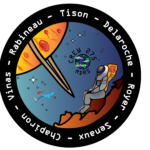
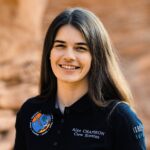
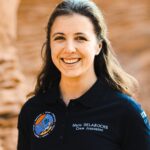

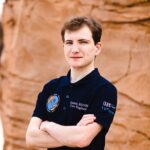
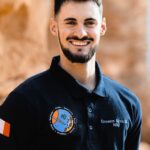

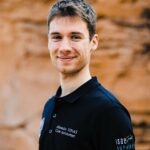
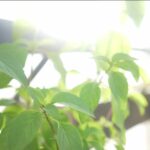
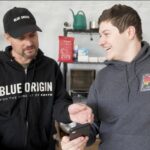
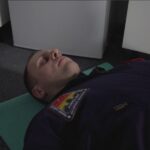

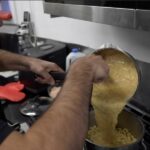
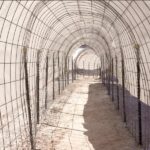
You must be logged in to post a comment.